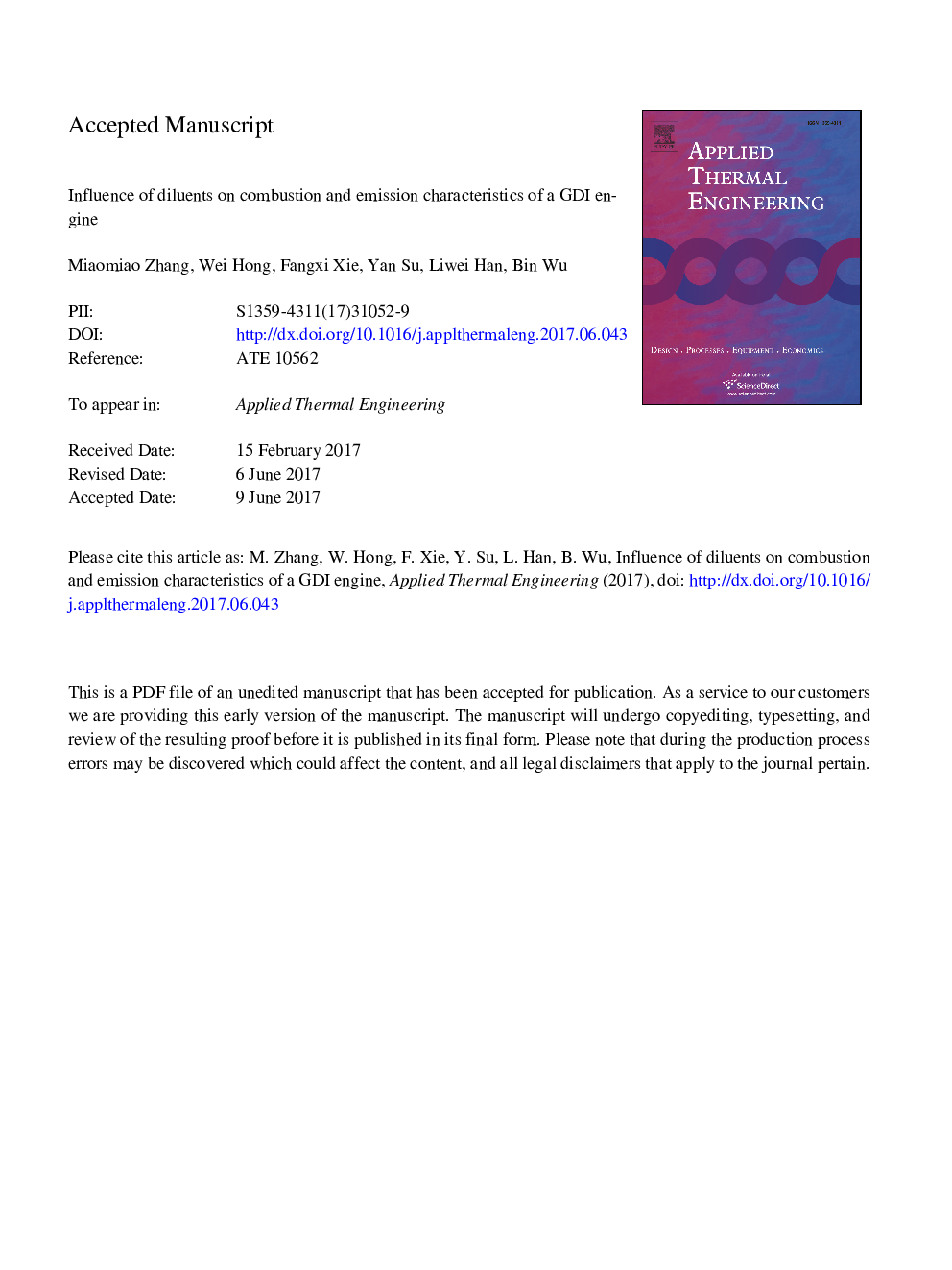| Article ID | Journal | Published Year | Pages | File Type |
|---|---|---|---|---|
| 4990660 | Applied Thermal Engineering | 2017 | 35 Pages |
Abstract
Exhaust gas recirculation (EGR) and lean burn are two common examples of dilution combustion that have been widely applied to improve the performance of gasoline direct injection (GDI) engines. This paper studied influences of air and EGR gas components (CO2, N2, and Ar) on combustion and emission characteristics of a GDI engine, in order to understand their independent effect and provide bases for optimal control of diluents. The results indicated that CO2 dilution showed the strongest influence on combustion process, while Ar showed the weakest. As increasing CO2 addition ratio, the flame development and combustion duration were extended, the combustion center was delayed and the cycle-by-cycle combustion variations was deteriorated significantly. Under the same addition ratio, Ar dilution gave the best fuel economy, while CO2 dilution could more effectively suppress NOx, HC and particulate matter emissions. Moreover, Ar dilution offered the best relationship between fuel economy and NOx emission, followed by N2 and then CO2, and it got the lowest brake specific fuel consumption at the same NOx level. However, CO2 dilution is the most effective method in suppressing particles at the same level of fuel economy.
Related Topics
Physical Sciences and Engineering
Chemical Engineering
Fluid Flow and Transfer Processes
Authors
Miaomiao Zhang, Wei Hong, Fangxi Xie, Yan Su, Liwei Han, Bin Wu,
